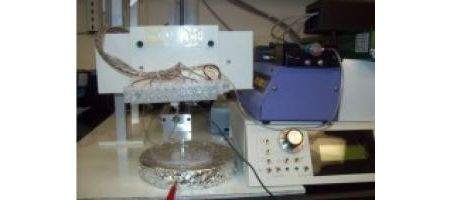A new hybrid printer can print out cartilage for implantation into victims of sporting and other injuries, say its developers.

It’s a combination of two low-cost fabrication techniques – a traditional ink jet printer and an electrospinning machine – which allows the creation of a structure made from natural and synthetic materials. The synthetic materials give the implant strength, while the natural gel materials provide an environment that promotes cell growth.
Its developers say their printed cartilage is stronger than that created by an ink jet printer using gel material alone, and stands up well to both lab tests and real life.
“This is a proof of concept study, and illustrates that a combination of materials and fabrication methods generates durable implantable constructs,” says Professor James Yoo of the Wake Forest Institute for Regenerative Medicine.
“Other methods of fabrication, such as robotic systems, are currently being developed to further improve the production of implantable tissue constructs.”
Key to the new system is the electrospinning machine, which uses an electrical current to generate very fine fibres from a polymer solution. This allows the composition of polymers to be easily controlled, producing porous structures that encourage cells to integrate into surrounding tissue.
For the study, flexible mats of electrospun synthetic polymer were combined, layer-by-layer, with a solution of cartilage cells from a rabbit ear that were deposited using the traditional ink jet printer. The constructs were square with a 10cm diagonal and a 0.4mm thickness.
The researchers tested their strength by loading them with variable weights and, checked them after a week to see if the cartilage cells were still alive – which they were.
The constructs were also inserted into mice for two, four and eight weeks to see how they performed in real life. And, after eight weeks, they appeared to have developed the same structures and properties as elastic cartilage, meaning they’d be suitable for insertion into a patient.
In future, says the team, MRI scans could be used to create a blueprint, and cartilage constructs printed out to match.






